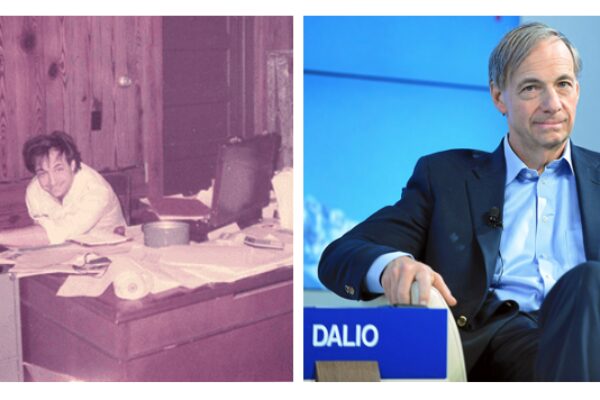
Over the last three years of building Incandescent, we’ve also been building a document we call How We Run Incandescent. The primary focus of this document is to provide an operating framework: a way of thinking about the principles of how we operate that translate effectively into our practices, the shared ways we as a team engage in important recurring situations.
As I’ve shared in another post on How to Run a Company, we admire a range of companies who have been uncommonly explicit and holistic about articulating a framework for how they operate. We’ve aimed to build on what we’ve learned from these examples, and to apply our own best thinking to ourselves.
How We Run Incandescent starts with a set of four foundational commitments – to discovery, impact, community and creating economic value — and from there we develop a set of principles that position the firm to advance these commitments in a powerful way over the long term. By being explicit about this holistic framework of principles, we have established a clear set of priorities for the kinds of practices we need to build and refine, in order to be able to realize the principles in our day-to-day work. When things don’t go the way we want them to or think they should, we then have an explicit foundation from which to examine what went wrong. At different times, an unexpected outcome may point to an issue at the level of fundamental principles, an issue at the level of practices, an issue at the level of execution, or may simply represent the natural dynamics of a set of circumstances we wish were otherwise. If we are sufficiently reflective about what we experience – itself an important area to have principles to guide and practices to ensure – then our operating framework should naturally improve over the years, and with it our ability to advance our fundamental commitments.
Clear as this logic is – why wouldn’t one want to have a framework of principles and practices that embodies a way of fulfilling the institution’s foundational commitments and can be refined on the basis of lived experience? – this kind of operating framework is extremely rare. It isn’t that most institutions shy away from being highly prescriptive about practices. A few do, some for deeply thoughtful reasons, such as the gaming company Valve. Most mature companies have evolved to be quite prescriptive about practices, but in a way that doesn’t clearly connect practices to principles – and certainly doesn’t weave together principles into a coherent framework across the enterprise, where each part reinforces the others. For instance, in the area of talent, a company might have elaborate practices embodied in process and policy – e.g., competency models, compensation bands, policy and “case law” about promotions, norms about staffing, and so on – but lack any clear articulation of how these practices flow from a core of higher-level principles relating to talent, let alone how these talent principles connect to other principles in areas like brand, culture or operations. (Most entrepreneurial companies are less prescriptive about practices at the level of the enterprise as a whole, but no more intentional about the practices they do have, and often operate in ways that reflect the founders’ preferences or prevailing norms for the kind of business they are, without having a clear articulation of what commitments their specific practices are in service of.)
In practical terms, the consequence of not building a holistic operating framework is to act on the basis of implied principles that one may not actually even believe. To take management consultancies as an example, most do their work in the form of projects, each with a letter of proposal, each priced in a way that is closely aligned with a build-up of the time that people at different levels in the firm will spend executing the project. Where there are variations, those investments need to be explicitly approved as discounts. For any given firm, there tend to be a dense thicket of practices relating to these different aspects of project scoping, pricing, staffing, approval of variances, and the like. Rarely are these practices theorized in the sense of being connected to higher-level principles, but if we reverse engineered the principles that would explain these practices, we’d arrive at something like the following two: (A1) we are in the business of selling and delivering projects; (A2) our business hinges on realizing a target dollar value for the inputs we deploy to projects with the greatest achievable consistency. There’s nothing necessarily illogical about these principles, but it also isn’t obvious that those principles are better than – or even as good as – contradictory principles, such as: (B1) we are in the business of helping companies perform better, and realizing economic value based on the value that we create; (B2) because we create value in contexts that differ dramatically in terms of time frames, risk levels, measurability, etc., we need to have a variety of business models that enable us to balance the potential for upside and the need to ensure the financial health of the firm as a whole and its major units. So long as a firm’s practices remain in the orbit of implied principles (A1) and (A2), it will never behave in ways that make sense from the view of principles (B1) and (B2). If (A1) and (A2) are explicit principles, that may be just fine. If (A1) and (A2) are convenient defaults that no one thinks are actually the right basis to steer by, that becomes a major problem.
Let’s contrast the kind of “operating by default” that most businesses engage in – like with the example of (A1) and (A2) above – with what it means to operate in an intentional way, in which practices deeply embody underlying principles. One of our principles at Incandescent is: Advisory relationships advance the client’s purpose through a shared agenda. We see advising as fundamentally not an activity but a stance, not so much a process as a way of being in a relationship. Treating someone as a client means beginning from their purpose, and trying to help them realize that purpose. This relation must be mutual. Only if the client is willing to make the purpose shared does true advising happen. Otherwise all that’s occurring is the idle sharing of advice.
That principle isn’t particularly meaningful except insofar as it is reflected in specific practices that connect the principle to our day-to-day work. To give an example of what this looks like, here’s an extended passage from How We Run Incandescent:
We should invest significantly in adding value while we’re still in the serious dialogue stage, and as we do so also be testing whether the conditions are right to be successful as a “we,” including whether what we would do is sufficiently valued to generate the right economics for the firm. We should often be willing to do more for free or at risk (i.e., with a mutual understanding that compensation would be folded into a future business arrangement that hasn’t yet been finalized, where we would not expect to be compensated if the agreement doesn’t get reached) than most other firms would, but only to do so in the context of a relationship in which there is the proper level of reciprocity. One of the benefits of “free as a price point” is that it enables us to create value without the sense of obligation that comes with an agreement to be compensated. In a range of cases, it may be economically more advantageous for us to be explicit that we only want to be paid in the context of an opportunity that is large enough, and therefore we’ll invest in a smaller body of work in the early going, with an understanding that the investment will be reflected in a larger proposal if the opportunity merits, or that it is a gift if the opportunity really isn’t sufficiently large or attractive. We raise the probability of doing the right transaction and significantly lower the probability of getting trapped over-investing in a small opportunity, even after we can see that we don’t have the right conditions to achieve our larger goals. On the flip side, we do not want to get drawn into the dynamic of “write me a proposal” when not enough work has been done and not enough conversations have been had. There may be times when putting some strawman thinking on paper is useful in advancing everyone’s visualization of what it could look like to pursue an opportunity together, but that should be mutually understood, versus rushing to a yes/no decision on a formal proposal that there isn’t yet a basis to make in a quality way.
Requests for proposal represent a challenging class of situations to navigate in accordance with these principles. We generally want to avoid RFP situations in which there isn’t an open dialogue with the prospective client. If the proposal is purely at arm’s length, that’s a sign of a transactional relationship that doesn’t fit well with our way of operating. Where there is an RFP that simply represents a competitive process, and we can create sufficient dialogue with the prospective client – a new one or an existing client who has chosen to bid out a certain piece of work – then there’s nothing inherently unattractive about participating. We should take care, in these situations, however not to take for granted too much the client’s statement of their problem or need, and not to let the formality of the RFP pull us away from our perspective on how we should best approach the opportunity into “checking the box” of an engagement model that the client has in mind. We’re better off in the long run being more differentiated in our approach, and winning those competitive proposals where our differentiation is valued. Of course this is not black and white, and there will certainly be times when we alter our view of how to drive a certain piece of work because that’s important to do in order to address a perceived client need, without which it would be difficult for them to hear or appreciate what we believe is the core of what we bring or what would create value.
These practices aren’t a process: they don’t imply a singular recipe that we invariably use. They’re simply a way of operating, which applies to a class of situations, in a sufficiently specific way that we can hold them up as a standard against which to compare our concrete actions. Of course it is a lot of work to articulate an operating framework, and even more work to keep that framework always in view amidst the day-to-day reality of running a business: cultivating relationships, doing advisory work, responding to opportunities, and so on. The fact that this is so much work has a great deal to do with why strategic drift and cultures that lack cohesion are so prevalent.
Trying to build a business that lastingly excels at something worth doing is a little like striving to be a world-class athlete or musician. Simply doing what comes naturally never works. The standard is too high. Training to achieve at the highest level is an unnatural act that can become natural, habitual, even beautiful. It isn’t just a matter of hard work. It’s a matter of disciplined work, informed by design, with constant feedback against a standard that’s never left to chance. We, like all companies, often fall short of this standard. It is our aspiration, however, to have a basis to know and recognize when we fall short, so that we can dust ourselves off, remember what we were seeking to do, and begin again.



